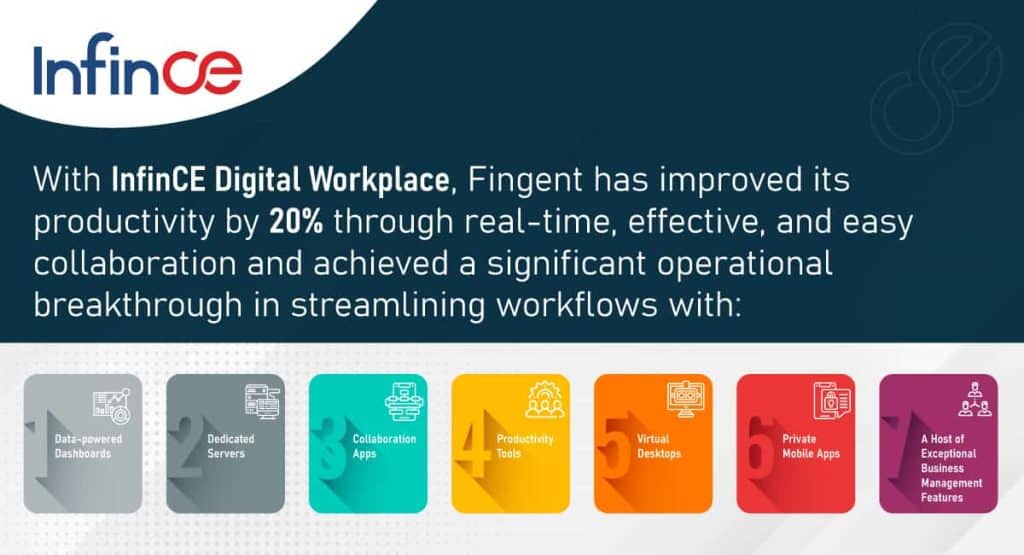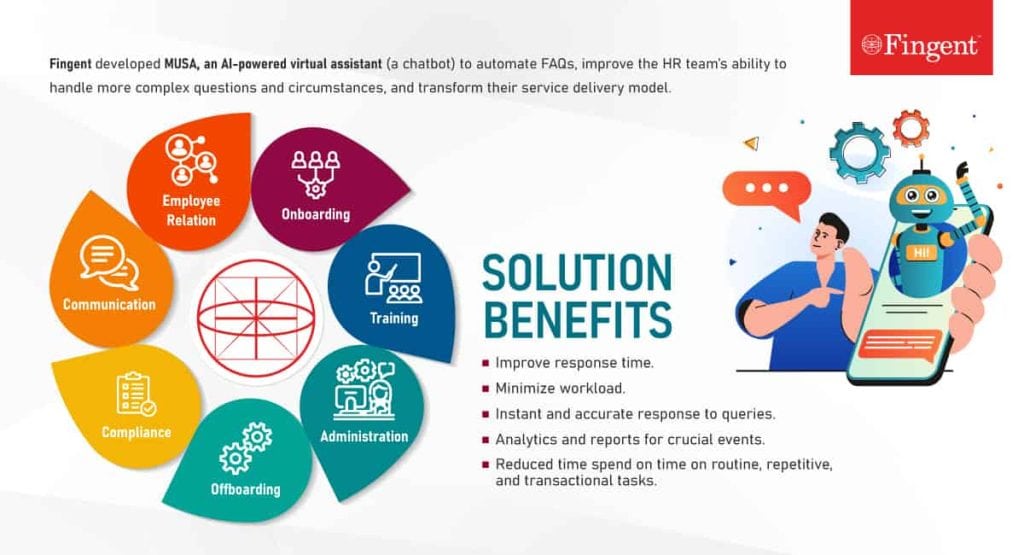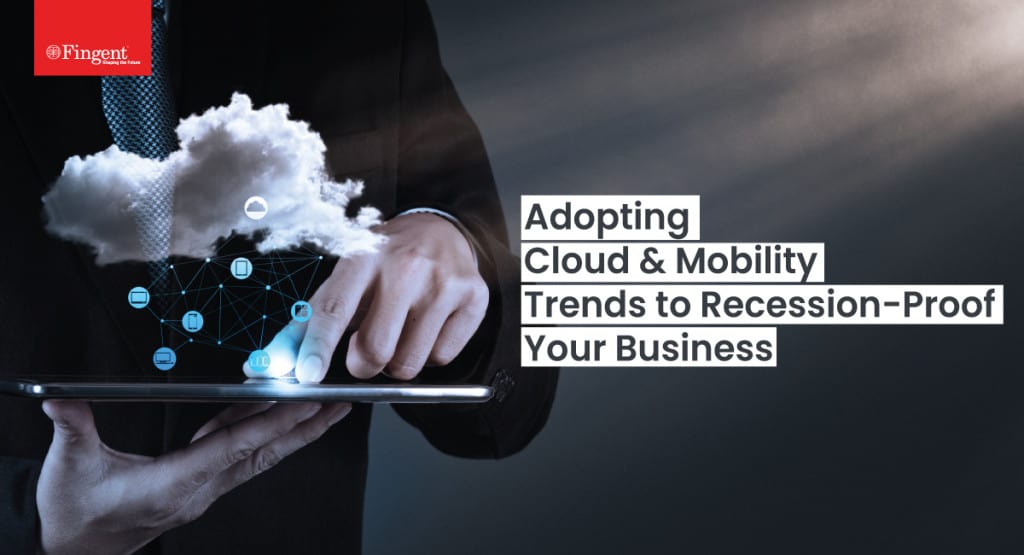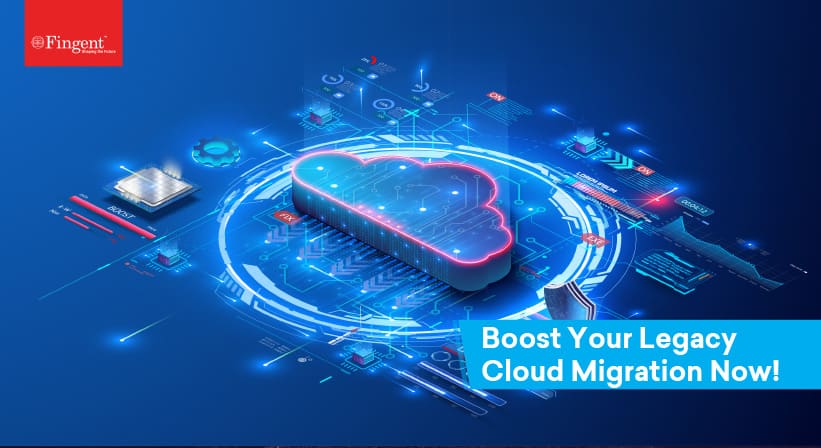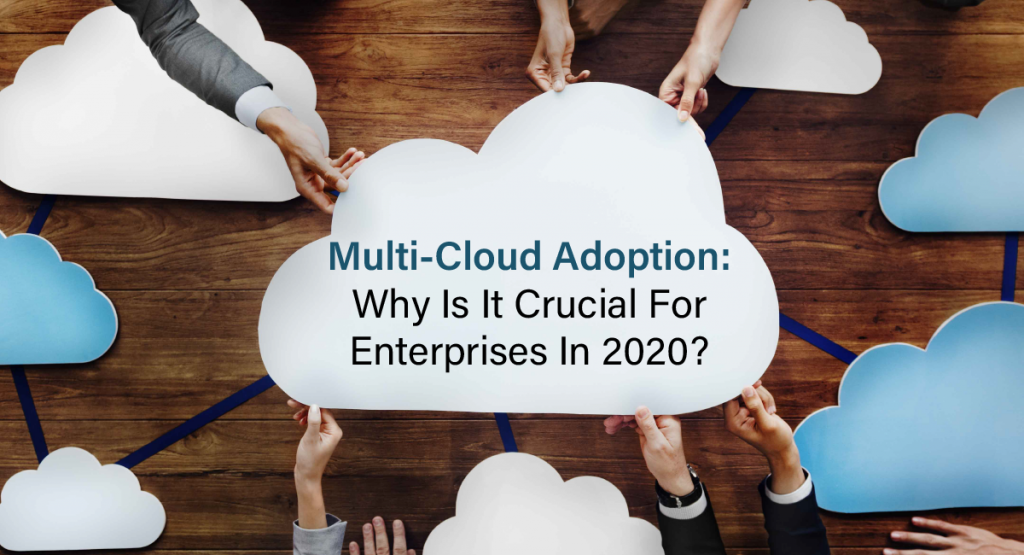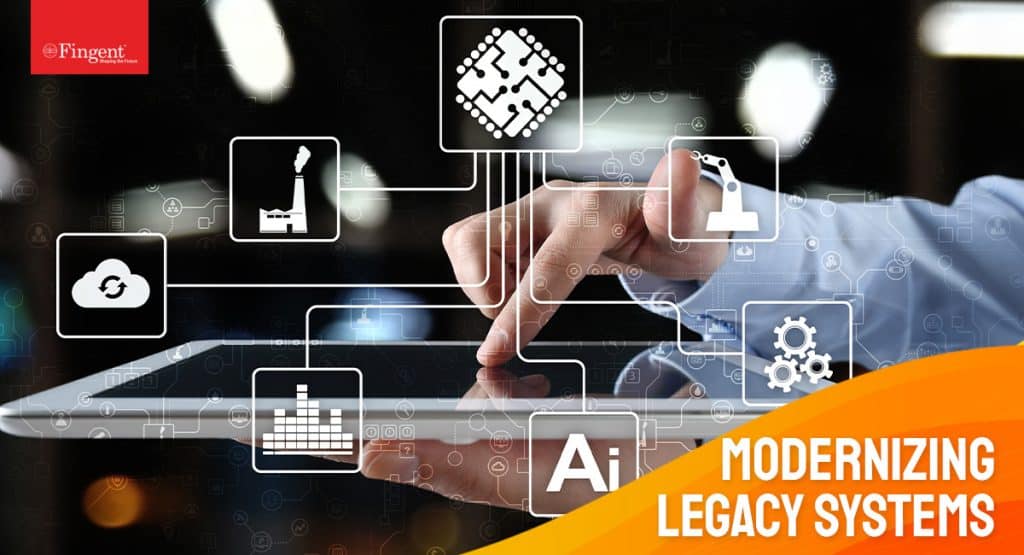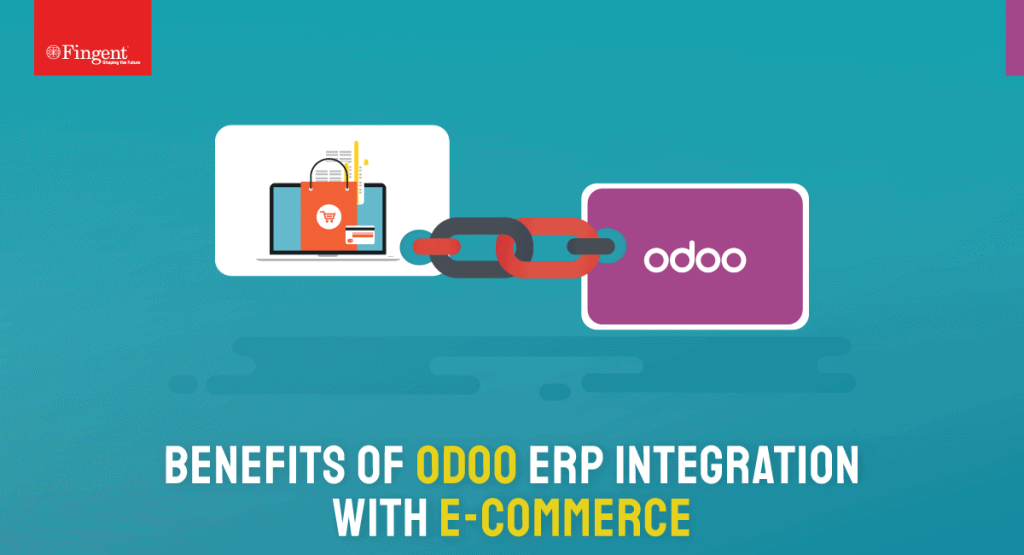Category: IT Infrastructure
Are you stuck in AI pilot purgatory?
Many businesses get a great start on AI. They have promising AI pilots. Then, they are stuck in a particularly painful purgatory, never able to breathe real life into their projects. This means they often fail to deliver measurable value.
In this article, we’ll discuss why scaling AI is important. We’ll look at how you could get trapped in AI pilot purgatory. Then, we’ll provide a practical guide for companies to move from testing to actual use through a strong AI for enterprise.
Drive Maximum Business Impact With AI. Our Experts Can Help You Adopt AI with Clear,Stress-free, Quick-Win Strategies.
Why AI Scaling Matters
Launching a single AI model is easy. The real challenge is using it in various departments or locations. It also needs to meet client needs.
For companies, AI for enterprise is not a passing fad. It is an operating strategy that helps your enterprise make better decisions, cuts down on costs, and increases your competitiveness in the market. In its proper deployment, AI in the enterprise transforms all functions. It mechanizes routine tasks, foresees customer behavior, and discovers new sources of revenue.
But few AI initiatives ever get into production. In fact, Gartner estimates that over 40% of AI projects will be discarded by 2027. Most of these projects end up discarded because they can’t deliver ROI or retain stakeholder confidence.
When you get a project underway as soon as you can, it saves you effort, money, and time. Yet why is scalability so important?
- Enterprises need to move from experimentation to impact, fast. Pilots test feasibility, and scaling proves the value of the project. AI insights help businesses make smarter marketing and logistics choices. This intelligence spreads across the organization.
- Scaled AI systems learn continuously, which improves performance outcomes over time rather than staying as a one-off experiment. This provides ROI sustainability.
That’s why AI scaling from pilot to production separates visionary firms from those just experimenting with innovation.
Understanding the AI Pilot Purgatory Challenge
Many organizations are eager to begin new initiatives. Pilot projects are a great choice because they show potential. But somewhere between understanding the concept and production, the excitement fades. We call this stage the AI Pilot Purgatory, a place where great ideas stall. So, what keeps enterprises stuck here?

- Lack of clear business alignment: Many pilots show off new tech but fail to prove their value. Without measurable business outcomes, a pilot struggles to secure leadership support.
- Data silos and quality problems: AI hungers for good data. If data is disparate across departments, it can end up being inconsistent. This will hinder scaling.
- Infrastructure constraints: AI needs top-notch cloud infrastructure, data pipelines, and MLOps platforms to scale, but most companies ignore that.
- Lack of skills: To scale, data scientists won’t be enough. You require a team consisting of engineers, domain specialists, and a manager. They will keep an eye on the progress.
- Cultural pushback: Employees will push back against AI because they don’t believe in its decision, or they are afraid of being completely automated.
Eventually resulting in adoption barriers. To help your pilot escape purgatory, you need a complete enterprise AI strategy. This strategy should blend technology, governance, and cultural readiness.
Strategizing a Blueprint from Pilot to Production for AI Success
When you transition from pilot to production, the process isn’t done overnight. It is a structured journey that follows a blueprint. Here’s a blueprint to help your business scale AI from pilot to production.
1. Start with Business Value, Not Technology
Before coding for your project, determine high-impact business challenges that can be addressed with the help of AI. You can inquire:
- What are the most important processes in my company that can use automation? Are there any areas that can implement prediction to ease workflows?
- How should the project’s success be measured (KPIs, ROI, or time saved)?
This makes your AI for enterprise investment business-focused, not an experimental lab.
2. Build a Scalable Data Foundation
When your data is ready, AI success starts there. Construct central data lakes and maintain clean, labeled, and easily available data for departments. Invest in data governance frameworks such that data is of good quality and compliant.
3. Plan Scalability in Advance
Use reusable and modular blocks in building AI models on a strong foundation. Enforce MLOps practices that help integration, version control, and auto-deployment. This makes your AI a repeatable and scalable system rather than a one-time project.
4. Establish a Cross-Functional AI Taskforce
Scaling AI is an enterprise project, not an IT one. It involves more than one entity to make it work. So, you can bring in business leaders, data scientists, engineers, and compliance teams. Join forces towards a single purpose.
5. Use Ethical and Secure AI Practices
Enterprises need to focus on fairness and data privacy. To safeguard important data, establish an AI ethics board that looks carefully into policies that protect information. You can show accountability and regulatory compliance with XAI models.
6. Measure and Learn
Every successful enterprise AI strategy has ongoing feedback loops. Continuously track model performance, user adoption, and business results. Subsequently, retrain and improve models to keep pace with changing business objectives.
Strategize a Successful AI Journey for Your Enterprise. Assess AI Readiness, Spot Opportunities, and Integrate AI into Your Workflows.
Real-World Examples: Industry-Wise AI Scaling
Let’s explore how different industries are scaling AI in the enterprise effectively.
1. Banking and Financial Services
Banks lead with AI for enterprise when they use predictive analytics to detect fraud. They also use it to assess credit risk and personalize customer experiences.
Example: JPMorgan Chase’s COiN platform checks legal documents in seconds. This cuts down on spending for manual work and lowers operational costs.
Value: They experience all-round risk management and wiser decision-making.
2. Retail
AI for enterprise enables retailers to build buying experiences that are unique to their customers. It also streamlines supply chains.
Example: AI is employed by Walmart to predict customers’ demand. If their demand is altered, they modify stocks in real time.
Value: They get reduced wastage of products and improved customer service
3. Healthcare
Healthcare organizations gain from using AI in the enterprise. It helps with the before–diagnostics and predictive care. It also makes a notable difference to patient engagement.
Example: Diagnostic systems powered by deep learning can help analyze patient data and medical imaging in real time. The AI solution can be integrated with Electronic Health Records (EHRs) and lab databases. It also keeps HIPAA compliance and ethical transparency with enterprise AI strategy frameworks.
Value: Improved diagnostic accuracy, faster report turnaround time, and enhanced collaboration between clinicians and AI systems.
4. Manufacturing
AI in the enterprise changes manufacturing. It helps with predictive maintenance and quality control.
Example: Top players are using AI sensors that monitor machinery and prevent any breakdown.
Value: With this, they saved money, cut downtime, and achieved improved product consistency.
5. Nonprofits and the Public Sector
Non-profit organizations have greatly benefited from scaling AI implementations in enterprises for their workflows. It helps them to enhance engagement with donors and optimizes the way resources are utilized.
Example: UNICEF employs AI-driven data analytics to understand which regions require emergency aid.
Value: AI helped enhance their response time and effectively use their resources.
Common FAQs
Q. What is enterprise AI, and how is it different from general AI?
A. Enterprise AI is the use of artificial intelligence within large business settings. Enterprise AI is different from general AI. While general AI is used for consumer, as opposed to business, purposes and research, enterprise AI is designed to reinvent core business processes. Decision-making, prediction, automation, and customer interaction are just a few of them. It is about structured frameworks, governance models, and scalable infrastructure designed to enable the enterprise environment. Consider it as AI designed to deliver performance, compliance, and influence at scale.
Q. What is the timeline to deploy AI in a firm?
A.The timeline for implementing AI in the enterprise within a business relies on three key considerations: scope of business, data maturity, and complexity. A pilot would take 3–6 months, and a scaled deployment would take 12 to 24 months. Data-driven organizations with an adaptable culture can reduce the adoption time. Scaling is needed to plan extensively. That involves using AI to enhance processes and employee retraining. It can also establish MLOps for continuous improvement.
Q. Can small or medium enterprises scale AI successfully?
A. Yes! A size 500 fortune is not necessary to do business using AI for an enterprise. When an AI application is cloud-based, it allows SMEs to apply scalable analytics and automation. Begin small. Begin with one that has a high impact, such as sales forecasting or customer support automation. Pilot first, then roll it out incrementally. Strategic use of AI for enterprise has nothing to do with size but with clarity, intent, and action.
Q. How secure are enterprise AI implementations?
A. Enterprise AI rollouts put security at the top of the agenda. All serious AI systems abide by data protection legislation, like GDPR, and follow industry best practices. Security best practices include:
- Encryption of data in motion and rest
- Role-based access control implementation
- Conducting regular model audits
- Explainable AI (XAI) brings a whole new level of transparency
When done right, yes, enterprise AI can be secure. As secure as the systems it runs on. In fact, it can be even more secure because of its built-in anomaly detection and predictive monitoring.
How Can Fingent Help
At Fingent, we help businesses with their enterprise AI strategy. We guide them from ideas to full-scale implementation. We focus on finding real business value. We build data-driven roadmaps and facilitate responsible adoption across the enterprise. We help organizations:
- Move from pilot to production confidently
- Implement scalable and secure AI structures
- Make all transactions transparent and compliant
- Return quantifiable ROI with intelligent automation and analytics
Start your AI journey or move past pilot purgatory with Fingent. We can help you speed up transformation using AI for enterprise solutions that really work.
Think, Transform, and Evolve with AI
Scaling AI is not just about technology — it’s about transforming the way enterprises think, work, and evolve. Companies can avoid pilot purgatory by embracing an AI-based strategy that is robust and more powerful. Scalable infrastructure and an innovative culture are required. This can unlock the full potential of AI. The companies that succeed today will be leaders tomorrow.
Stay up to date on what's new

Featured Blogs
Stay up to date on
what's new



Talk To Our Experts
The strategic significance of advanced technologies as a critical business component is recognized by enterprises like never before. Besides business modernization and cost reduction, advanced technologies allow you to compensate for labor shortages, improve brand value and competency, and expedite research and innovation processes. However, several companies jump onto the bandwagon without properly understanding the practical applications and benefits of advanced technology in their business. Only 23% of small and medium-sized enterprises (SMEs) worldwide can invest in and grow with new digital tools, indicates the World Economic Forum. This data proves why companies should analyze advanced business technology examples before adopting digital tools.
Read more: Using technology to build customer trust: Your business plan for 2022
To simplify your understanding, here’s a quick rundown of five advanced business technologies we believe will help you cope with the new business and economic environment.
- Simplifying Workflows With Cloud
- Low-code Applications
- Robotic Process Automation (RPA)
- Document Data Extraction
- AI Assistants
As these business technologies become more affordable and handy, businesses are ardently pursuing them to automate customer service, streamline workflows, differentiate products and services, and reach new markets. Depending on your budget, implementation timeline, priorities, and unique business requirements, our team at Fingent helps you build the roadmap for technology adoption.
Let’s take a closer look at the five inevitable technologies for business transformation today:
Read more: How to gain maximum value from your technology investments?
1. Simplifying Workflows with Cloud
Workflow management is a highly overlooked enterprise strategy that directly impacts productivity. Managing different stakeholders, heaps of confidential data, and a series of preset and conditional tasks manually can lead to several errors such as employees missing key steps, policy violations, compliance issues, and monetary losses. By taking your workflows online, cloud-based workflow management applications increase your productivity.
Cloud-powered workflows or workflow management tools:
- Are scalable, centralized, customizable to your needs, easy to integrate, secure, reliable, and hassle-free.
- Offer a seamless and unified collaboration interface by preventing users from toggling between different messaging apps or communication channels.
- Reduce your dependency on in-house IT team by passing on the software maintenance responsibilities to the third-party software vendor.
- Can be accessed via any authorized network (with approved access credentials), on any device, from anywhere, 24/7. This has been a huge game-changer for several companies that switched to remote operations during the pandemic.
Example of a Cloud-based Workflow Tool
Finding a cloud workflow management tool that can be customized to your company’s requirements is daunting. The platform should integrate well with your organizational processes without disrupting your existing workflow. This is where digital workplace applications like InfinCE make the difference.
With InfinCE Digital Workplace, Fingent has improved its productivity by 20% through real-time, effective, and easy collaboration. Data-powered dashboards, dedicated servers, collaboration apps, productivity tools, virtual desktops, private mobile apps, and a host of exceptional business management features enabled us to achieve a significant operational breakthrough in streamlining workflows.
Read the full case study here.
2. Low-code Applications
Gartner estimates that by 2025, 70% of enterprise applications will use low-code or no-code technologies. Digital business transformation requires pushing custom software solutions to the market at lightning speed. This demand has given rise to low-code applications that will break the technological and organizational silos of application development, automation, integration, and governance. Low-code development enables business users to bring innovative ideas to life by just dragging and dropping low-code elements through a graphical user interface.
In simple words, low-code development enables “citizen” developers or non-tech users (such as business analysts or marketers) to build dashboards and survey or contact forms faster. Professional developers, on the other hand, can leverage low-code techniques to perform more efficient tasks such as legacy application modernization or back-end integrations with improved agility and velocity.
Use Cases for Low-code Applications
- Customer engagement applications and portals
- Mission-critical applications such as ERP software, payments manager, etc.
- Data analysis applications, BI dashboards, and data management software
- Mobile apps for customer engagement
- Order processing, inventory, order fulfillment, supply chain, and accounting apps
Salesforce Lightning, Microsoft Power Apps, and Zoho Creator are some of the leading low-code applications today. SAP users can leverage the unified low-code/no-code (LCNC) solutions on SAP Business Technology Platform (BTP) to rapidly build and extend applications, and automate tasks and processes.
3. Robotic Process Automation (RPA)
Robotic Process Automation (RPA), often referred to as software robotics, is an easy-to-use software technology that allows anyone to automate digital tasks within their business processes. RPA allows users to create software robots or “bots” that can learn, emulate, and then execute rules-based business processes. According to Forrester Research, RPA software revenue is expected to reach $6.5 billion by 2025, while RPA-related services revenue could hit $16 billion in the same year.
Potential Use Cases for RPA
We offer free proof of concepts to help you understand how RPA can improve your business efficiency and customer experience. Some of our top use cases include:
- Automating discharge protocols and data management to increase HR productivity in healthcare.
- Daily retail process automation such as order processing, inventory and warehouse management, etc. to save time and resources.
- Reducing customer wait times through RPA-enabled chatbots that answer customer queries in real-time.
- Error-free, automated billing and invoices to keep your financial systems and reports up-to-date.
- HR teams can automate the maintenance of personnel data and records, streamline onboarding, and manage payroll seamlessly.
Download our white paper to learn more about how Robotic Process Automation can simplify your business operations
4. Document Data Extraction
Extracting quality data out of unstructured or poorly structured data sources and documents for further processing, migration, and storing has been a biggest obstacle in automating back office operations. If you are entering structured invoices to a robust ERP tool like SAP, your payments can be automated and system records can be generated automatically. Due to the high costs of data extraction, several businesses extract only critical information fields, for example, the payment field within an invoice. Businesses are compelled to manually extract data from other important fields, such as validating the invoice’s compliance with VAT.
AI-integrated OCR Software for Document Extraction
Optical Character Recognition (OCR) is an affordable, game-changing technology that automatically extracts data from the digital images (photos) of large files, scanned documents, and sub-titles or captions superimposed on an image. It reduces the time spent in manual data entry and extraction by automatically converting typed, handwritten or printed text into machine-readable text. AI-powered automated data extraction tools like DocuSign, Docsumo, Kofax Capture, and Amazon Textract leverage OCR technology to reduce the chaos involved in document data extraction and enable businesses to create an efficient workplace.
Our team helps customize document data extraction software that can save your time and money by eliminating transcription and transposing mistakes.
5. AI Assistants
One of the most common examples of small business automation today is the use of AI-powered virtual assistants. They can save your employees’ productivity by automating the most repeatable customer interactions, such as technical support, appointment scheduling, lead qualification, and order management. AI virtual assistants like Google Assistant and Alexa can understand and act according to your voice commands and customize responses to your queries. Understanding customer intent through natural language processing and recognition allows AI assistants to maintain a human-like conversation.
Chatbots are a popular category of AI assistants that are designed specifically for text-based channels like SMS, email, and live chat. Recent years have witnessed a rise in chatbot adoption among several business verticals, product and service lines, websites, mobile apps, customer portals, and so on. Data shows that 58% of B2B companies and 42% of B2C websites are using chatbots to make their websites and mobile apps more interactive. More than 56% of businesses believe chatbots to be driving digital disruption in their industry.
Case Study: AI Virtual Assistant for HR
Fingent’s HR team was pressed to transform their service delivery model as routine, transactional tasks affected their performance and efficiency. To solve their struggle, Fingent developed MUSA, an AI-powered virtual assistant (a chatbot) and integrated it with Fingent Hub, Fingent’s internal employee management system. MUSA is short for Multi Utility Assistant. Employees can ask MUSA any queries related to HR and IT DevOps processes at Fingent, and they’ll get answered instantly. MUSA has improved our HR team’s response time by minimizing their workload and allowing them to focus on areas requiring more attention.
Read the full case study here.
Business and Technology Are Inseparable
Gartner writes that businesses leading with technology employ advanced tech to boost their customer experience and revenue growth, have a clear understanding of their priorities, goals, and strategies, and invest in solutions tailored to their needs. Technology allows businesses to lower the walls within and between their organizations, customers, providers, suppliers, and so on. Organizations perceiving technology as a key business consideration will be able to match the pace of business change and stay relevant and competitive.
How can your company embrace growth in a new era of transformation and business technology trends? If you feel you’re getting caught in the technology maze, take a quick break to contact us.
Our consultants can simplify your technology adoption strategy based on your priorities, customer needs, financial resources, and technical requirements.
Stay up to date on what's new

Featured Blogs
Stay up to date on
what's new



Talk To Our Experts
Better businesses need better cyber security.
Regrettably, threats to cyber security have become the new norm across public and private sectors. The pandemic affected all types of businesses. If anything, uncertainties around remote working amplified cybercrime. As a result, cyber security’s importance has become more clear now than ever before.
As cyberattacks become more sophisticated, businesses will have to stay one step ahead. Security professionals need strong support from advanced technologies like Artificial Intelligence (AI) to protect their companies from cyber threats.
AI can enable security teams to handle greater and more complex threats than ever before. More specifically, it has proven to identify and prioritize threats. In some cases, AI has even taken automated action to quickly remediate security issues. This article considers how AI can redefine the cyber security needs of an organization.
Before we discuss further, let’s find out the impact cyberattacks can have on businesses.
How Cyberattacks Affect a Company’s Performance and Value
Protecting a company against cyber threats is costly. It can impact the relationship between your company and your customers.
Unfortunately, cyber threats are never static. Millions are created each year and are becoming more and more potent.
In a survey conducted by Hiscox-Cyber Readiness Report, 28% of the businesses that suffered attacks were targeted on more than five occasions in 2020. Companies have lost millions to such cyber security breaches. Companies like financial services, technology, and energy were hit the hardest.
That is not all. Cyber security breaches have caused several other damages including:
- Outlays such as insurance premiums and public relations support.
- Operational disruption.
- Altered business practices.
- Business’s standing and customer trust.
- Stolen intellectual property including product designs, technologies, and go-to-market strategies.
- Legal consequences.
Read more: Quantum Vs Neuromorphic Computing – What Will the Future of AI Look Like!

How AI Contributes to Cyber Security
Cyber threats are real and certainly worrisome to businesses. It is important to protect critical digital assets.
However, it takes planning and commitment of resources. With good security operations, you can stay on top of most of the most serious cyber threats. True, there may be smart thieves, but Artificial Intelligence can provide smarter security.
Here are 5 specific ways AI can contribute to cyber security:
1. Robust Zero-Day Malware Detection
Malware is unpredictable. And signature-based tools will not detect attacks that have never occurred before. Given that, is it possible to defend against something unpredictable? Yes!
AI is cable of grasping all the possibilities and finding relationships that traditional security tools would miss. While traditional security strategies have their place in cyber security, they are insufficient to detect and prevent zero-day attacks.
Zero-day attacks are best detected by automatically identifying aberrant behavior and alerting administrators immediately. AI can enable organizations to be more proactive and predictive with their security strategies.
Artificial Intelligence provides visibility and security for an organization’s entire data flow. AI helps organizations gain such visibility by dismantling each incoming file to search for any malicious elements. Simultaneously, it also looks at the user and network behavior and anomalies from expected activities.
Together with ML, AI adapts its behavior to new network conditions, constantly adapting to evolving security conditions. Even those hackers who use modern ML penetration methods cannot be fool AI-enabled cyber security.
We cannot stop security breaches from happening. But Artificial Intelligence helps organizations avoid potential disruptions before attackers wreak havoc.
2. AI Can Safeguard Large Amounts of Data
Whether a company is small or mid-sized, there is a lot of data exchanged between customers and the company every day. This information must be safeguarded from potential cyber threats. Cyber security experts cannot always inspect all the data for potential threats.
AI is the best option to detect threats to routine activities. Because of its automated nature, AI can sift through large amounts of data in real-time and identify any hazards lurking amid the chaos.
Read more: Artificial Intelligence and Machine Learning – The Cyber Security Heroes Of FinTech!

3. AI Takes Care of Redundant Cyber Security Operations
Hackers constantly modify their methods but the fundamental security practices do not change. Plus, they may weary your cyber security worker.
Artificial Intelligence takes care of redundant cyber security operations while imitating the best of human traits. It also does a thorough analysis of the network to locate security flaws that may harm your network.
4. AI can boost response time
Ideal security is the one that can detect security threats in real-time. The principle of ‘a stitch in time saves nine’ applies here.
Integrating AI with cyber security measures is a sure way to detect and respond to attacks immediately. Unlike humans, AI does not miss a spot when examining your system for risks. Besides, it can detect risks early, thereby boosting response time.
5. Authenticity Protection
Most websites allow users to log in and access services or make purchases. You will need greater protection as such a site contains private information and sensitive material. To maintain customer trust, it is important to ensure all data about your guests remains safe while accessing your site.
Artificial Intelligence can provide an enhanced security layer. AI can secure authentication when a user wishes to connect their account. Login measures like CAPTCHA, fingerprint, and facial recognition are used to determine if the attempt is legitimate or not.
Read more: Safeguarding IT Infrastructure from Cyber Attacks – Best Practices

Do Not Be Afraid!
Fingent is your reliable security partner. We provide professional security with reliable service. As a proactive security partner, we look ahead to ensure your business is successful far into the future.
Using AI’s real-time monitoring capabilities, we can spot potential issues before they become a major problem. Security experts Fingent are aware that cyber security threats are not limited to work hours. Our professionals at Fingent software development experts will be there for your business whenever you need us.
We are in business today because of the reputation we built with our customers. We offer a unique level of enterprise IT support, and our clients can rest easy knowing that their business is always protected.
Give us a call and let’s discuss your security needs.
Stay up to date on what's new

Featured Blogs
Stay up to date on
what's new



Talk To Our Experts
Everyone in the manufacturing world faces the fear of going bust if they do not adopt digital transformation. That is a given and yet we can all agree that digital transformation doesn’t happen overnight.
Currently, enterprises encounter several challenges on their digital transformation journey. One among them is to learn to create and use data through a product life cycle that creates flexible manufacturing processes. Such processes can respond instantly to changes in demand at a low cost to the firm without damage to the environment.
Are you a manufacturer with global aspirations? Do you need to accelerate lead times and product customization? If so, then you may encounter these common business challenges:
- Need for critical infrastructure in remote locations.
- Need for tailored and full-custom design with high quality and ruggedness that fit your specific requirements.
- Need for a simplified supply chain that enables you to get to market quicker and realize faster time to revenue.
- Need to maximize efficiency in the supply chain and ultimately reduce lead time.
- Need to ensure product longevity by providing the same time-zone technical support. And to provide personal support services with the ability to decrease lead times.
Technologies such as 5G, edge computing, and cloud have been pushed further into the limelight especially over the past year, in the wake of the pandemic. As enterprises react to the changing world, these technologies are now emerging at the forefront as a necessary component of network infrastructure.
Read more: Take a Look at How 5G is Reinventing the Way We Work
How Do 5G, Cloud, And Edge Computing Unlock Enterprise Opportunities?
5G, cloud, and edge computing have become major areas of interest and investment at the enterprise level. They provide real-time insights, analytics, and business benefits that can be used once mission-critical latency issues are resolved.
5G, Edge Compute, and Cloud technologies are an emerging set of solutions. When orchestrated together these can enable a spectrum of benefits that are contingent on industry, maturity, and technology. These are complementary technologies that work together for most use cases.
What unlocks the enterprise opportunities is to marry new and existing technologies to create machinery that is as proactive and predictive as the best workers. Edge computing, cloud, and 5G connectivity can be combined to supercharge real-time decision-making and improve quality assurance throughout the supply line.
How would you like it if you can predict the future? Or if you could see the possible problems and correct them before they happen? 5G, edge computing, and cloud promise to give you that ability! These technologies are in a symbiotic relationship.
Cloud contains unlimited resources. Powered by 5G, AI models can continuously update and adapt to situations within the enterprise. This virtuous feedback loop delivers real-time results. Plus, it delivers ongoing improvements over time, as the entire system across the enterprise learns and improves from prior experiences.
This can greatly improve the productivity of your employees. Also, it can save costs tremendously as it can reduce downtime. Here are some specific ways in which 5G, edge computing, and the cloud can benefit the industry.
Read more: How 5G Will Boost Enterprise Investment In Cloud
Cloud For Responsive Resilience
In the past when enterprises needed to deploy applications using their equipment, they had to ensure that their server, memory, and processing power were equipped to run the application efficiently. Any misjudgment could have a cascading effect throughout the enterprise. However, the cloud provides infinite opportunities.
What enterprise opportunities does this provide? It provides what all enterprises need more than ever: increased speed, resilience, and flexibility.
Bringing cloud intelligence to their IT networks can be very beneficial in performing preventive maintenance, making decisions in real-time, and keeping data more secure. It allows for automated decision-making while saving bandwidth costs.
By leveraging cloud capabilities, enterprises can reduce overall costs. They can benefit from automated one-click deployment and realize higher value from data. This contributes to resilience. Resilience is more important to enterprises that are struggling during major disruptions like the pandemic.
Read more: Why It’s Time to Embrace Cloud and Mobility Trends To Recession-Proof Your Business?
5G Can Help Process Information Across The Enterprise
5G technology enables enterprise connectivity, remains powerful, and is constantly updated. 5G enables all the machines and modules to function at the same speed, reliability, and security as we expect from our phones. In other words, it prevents loss of time due to hanging or buffering associated with the mobile networks.
5G will deliver multiple benefits to those who adopt it:
- Provides ultra-reliability and security. It is far more efficient than any wireless mechanism.
- Since 5G eliminates the need for wired connectivity, it enables a high-speed environment with higher flexibility and lower latency.
- Provides the ability to handle mass customization and personalization.
- 5G augments IoT capacity to support device density and data volume
- Improves productivity as it reduces failure rates.
Read more: Top Business Drivers that Boost Legacy Cloud Migration
Edge Computing Can Help Deploy Technology With Unhindered Network Performance
Edge computing can reduce pressure on data centers and service provider networks. Plus, it preserves bandwidth and brings real-time processing close to users and their devices. Here are specific ways in which edge computing can prove advantageous:
- Maintain competitive edge: Edge computing can provide the ability to use data from various machines, processes, and systems to adapt the manufacturing processes in real-time. It can support precision monitoring of the production line. This enables swift operational responsiveness to unforeseen events. Additionally, it can gather data from connected systems and devices in real-time. Hence, manufactures can now analyze data at the point of creation leading to faster and more informed decision-making within the enterprise.
- Helps seize the opportunities that data and performance-intensive technologies present: Edge computing can empower employees and streamline workflows. It can enable smarter supply chains and improve employee safety and productivity.
- Documents at fingertips: Edge computing can provide workers easy access to documents, new workflow instructions, real-time videos and images, and new product updates. This can increase greater efficiency despite social distancing protocols in the current scenario.
Gain a Competitive Edge with Next-Gen Technologies
With IoT deployment on the rise, enterprises are increasingly adopting 5G, cloud, and edge computing. These technologies provide a competitive advantage by reducing unexpected downtime issues. Hence, the enterprises enjoy improved overall efficiency.
The convergence of these technologies can increase agility and resilience. These technologies can be leveraged to establish enhanced productivity, customer satisfaction, and increased ROI. Hence, 5G, cloud, and edge computing technologies must form an important part of any post-pandemic strategies. You must be eager to get started on gaining that competitive edge. Let’s get talking and make that happen!
Stay up to date on what's new

Featured Blogs
Stay up to date on
what's new



Talk To Our Experts
The cloud approach is gaining immense popularity amongst businesses due to its scalability, enhanced productivity, and cost-effectiveness. According to Cisco, in 2021, over 94% of workload and computing processes will be hosted on the cloud. While many firms are already implementing and thriving with the Cloud, a few still remain to deploy this technology. This blog is a simple guide to help you understand every aspect of the Cloud, and how your business can drive success with Cloud Application Development!
What’s Ahead?
- Knowing the Cloud!
- What is a ‘Cloud-based Application’?
- Benefits of a Cloud App
- Types of Cloud Application
- Key Features to Consider When Developing a Cloud Application
- Some Examples Of Cloud Application
- Developing a Cloud Application
- A Look at the Tools to Build Cloud-based Apps
- Challenges of Cloud-based Application Development
- A Few Common FAQs
- Conclusion
Knowing the Cloud!
In simple terms, the cloud refers to software or service that is accessed over the internet. The cloud uses data centers to store data, which enables easy access of files and applications from anywhere and from any device.
For businesses, leveraging cloud technology can immensely reduce IT costs and overhead, eliminating frequent updates and maintenance of servers. Cloud computing can also simplify international operations for companies by allowing seamless access and control of files and data from anywhere. Google Drive, Dropbox, Apple iCloud, and Microsoft OneDrive are some widely used cloud services today.
Read more: Why It’s Time to Embrace Cloud and Mobility Trends To Recession-Proof Your Business?
What is a ‘Cloud-based Application’?
In the last decade, cloud computing has experienced a tremendous investment. By the end of 2023, the global cloud market is estimated to reach over $ 623 billion.
Typically, a cloud-based app is an Internet-run program having its components stored online with some or all of its processes carried out in the cloud. These on-demand services allow you to access computer networks, storage, or resources using the internet.
Cloud-based solutions help businesses augment capacity, scalability, and functionality while at the same time reduce maintenance and cost for computer infrastructure or in-house teams.
Common solutions provided by cloud-based applications may include;
- File storage and sharing
- Order entry,
- Inventory management
- Word processing
- Customer relationship management (CRM)
- Data collection
- Financial accounting features
Benefits of a Cloud App
The cloud is creating a huge impact on businesses. According to Gartner, over 60% of companies will majorly rely on the cloud for their operations by 2022. Of course, this means that the cloud has some huge benefits to offer for businesses. Here are a few to highlight.
1. Improved data sharing and security
The data stored in the cloud is easily and instantly available to authorized users. Since the cloud offers easy availability of data, security and privacy are often a concern. That is why the advancements in cloud technology have majorly focused on providing enhanced data security. Many cloud providers now guarantee improved data security, making the cloud the best source for secure storage. Also in case of disaster recovery is inevitable, the cloud provides a streamlined solution to restore and back up data.
2. Improved collaboration
Cloud-based apps and software enable organizations to make collaboration an easy and effective process. These applications provide easy data sharing and editing options allowing employees to work effectively on projects remotely and in real-time. Role-based access control enables better monitoring of tasks, and improves team management, especially when operating remotely. Improved collaborations can help enterprises to reduce time-to-market and enhance customer service. InfinCE is a prime example of how enterprises can use a cloud-based app to improve team collaboration. The app provides centralized management, enhanced visibility, and easy communication that drives operational efficiency and productivity.
3. Cost-effective
The cloud space can be scaled up or down depending on your business needs. Cloud service providers allow you to pay per usage of the cloud infrastructure allowing you to only pay for the services you need. Most cloud providers offer seamless concierge support and regular maintenance, which in turn immensely helps reduce the stress and cost of maintenance. Moreover, there is no need to invest separately on devices to store data, as the cloud ensures safe and secured data storage. Put simply, cloud-based apps help enterprises reduce the upfront cost of the IT infrastructure and hence are a cost-effective solution.
Types of Cloud Application
To proceed with cloud application development, you will have to decide what type of app you would want to create. One way to classify the categories is about the differences in the app architecture.
SaaS – Software as a Service
SaaS serves both cloud apps as well as individuals. These apps run on third-party hardware and not on the user’s device. Also, the software is hosted remotely. A big advantage of SaaS is that you don’t have to spend on additional hardware or buy licenses for every software update.
IaaS – Infrastructure as a Service
This type of product often requires middleware and app support from the clients. The customer may have to create a custom programming bridge between the application and its operating system. However, with IaaS, one can develop a customized product without building the basic components from scratch.
PaaS – Platform as a Service
This cloud-based app development requires the application code from the customer. PaaS providers allow their customers to use their hardware and basic development software. As this software is updated constantly, developers can use only its latest version. PaaS is flexible and lets the users scale the product as per their needs. Cost efficiency and flexibility are some of the major benefits of PaaS.
Read more: Cloud Migration Strategy: 7 Steps to Accomplish a Flawless Transition
Key Features to Consider When Developing a Cloud Application
The Cloud is a powerful technology, which if leveraged the right way can do wonders for your company. That is why it is imperative to be clear and sure of what benefits you need exactly to derive out of the cloud application development. Here are a few things to consider when fixing the features of your cloud application.
One of the most eminent features of the cloud is that it provides ample space for flexibility and scalability. With the cloud, one can empower safe storage of data that can be expanded as per convenience.
Most users prefer the cloud because of its storage facilities. However, its security is always a concern. When investing in cloud application development, one must highly prioritize app and data security by ensuring a code-based architecture for improved security.
Although the cloud delivers unlimited benefits, cloud hosting comes with a cost. Thus, data size optimization and condensed user requests should be the top priorities while developing a cloud platform.
To ensure you attain maximum benefits from these and the many other features of the cloud, it is imperative that you partner with developers who are highly aware and experienced with the diverse cloud platforms so that you attain software that perfectly suits your business needs. Moreover, following an agile method of development would allow you to collaborate better with your developers, programmers, designers, data architects, and QA managers for improved development efficiency. At Fingent, we ensure client participation at every stage of app development.
Some Examples of Cloud Application
Most of the apps we use today, utilize the cloud in one way or another. Cloud application development has given birth to some amazing tools and services that make operating businesses a little less stressful. Here are a few to point out!
- InfinCE: Provides streamlined and simplified IT Infrastructure, centralized management, enhanced work collaboration, access to unlimited productivity tools, all under a single platform.
- Dropbox or Google Drive: This allows you to store your files on the cloud easily and help others access them from anywhere.
- Figma: This powerful cloud-based design app is gaining popularity due to its collaborative nature.
- Miro: This provides a virtual board that enables you to work with other users in creative and fun ways.
The possibility to collaborate with users from all over the world, even in real-time is one of the biggest advantages of cloud apps.
Read more: InfinCE – Untangling Technology for Businesses
Developing a Cloud Application
Cloud application development involves different stages, each of which matters to enable your app to hit the market. Most cloud application development teams use DevOps practices and tools such as Kubernetes to ensure an effective and successful project.
At Fingent, we analyze your business needs and custom-build apps that solve your business complexities. We can help you seamlessly transit to the cloud and efficiently deploy its benefits to achieve greater business growth and value.
A Look at the Tools to Build Cloud-based Apps
A wrong tech approach can slow down your business development, so the technological stack is of utmost importance when developing cloud-based apps. You can choose a cloud service vendor from market leaders such as;
- Amazon Web Services(AWS) – In 2019, it obtained a 32% market share and became the leading provider. AWS includes over 140 flexible and integrative services. This allows you to build almost any custom app.
- Google Cloud Platform – As a PaaS, it offers you cloud computing, API services, advanced analytics, storage, NoSQL database service, and even virtual machines. It is flexible, affordable and a great platform for start-ups.
- Microsoft Azure- Its solutions are designed for enterprises looking for scaling or having many web products. Its services may include ML modules, mobile back-end, database services, and virtual machines.
Cloud-based app structure
- Another aspect to consider when cloud application development is the data architecture. A cloud app operates as a collection of interconnected services or APIs. So, to get maximum benefits of cloud services, you will have to connect them and at the same time understand the kind of components you have while ensuring that those services are integrated.
- Next, you must consider data organization. Remember, the app architecture must instruct the cloud services about how to decouple the data. This will help you store the app components either on a public or private cloud. As a result, your business will become flexible and enable you to make your web performance better.
- You must develop a communication logic between the data and services of your app. The app components should communicate instantly. If the logic is not well-designed, the customer experience could be poor due to slow loading speed. So, optimize the communication and apply either single-channel streaming or system message grouping.
- Scaling is something you must think of in advance. Create a margin of safety for your operational channels and consider future traffic extensions. Make sure to build an operational model to help back-end components and storage server customers especially in extreme situations.
- The last issue to think about is the security algorithm. Banking, retail, or healthcare have their dedicated standards so make sure your tools meet their expectations. Make sure to check the security algorithms for any vulnerabilities of your cloud-based solutions and the encryption is strong. Also, implement a cloud identity and access management (IAM) approach, to ensure your product is secure and cost-effective.
Read more: 7 Reasons For Enterprises To Implement Multi-Cloud Strategy In 2020
Challenges of Cloud-based Application Development
When you decide to opt for a cloud-based software solution you should figure whether your company can be a cloud provider (SaaS, IaaS, or PaaS) or build an app based on third-party cloud solutions.
If you decide to be the cloud provider, you will have to think of issues such as the data processing logic, hardware, and service security as you will have to host your service and provide the users with a cloud network. If you decide to develop your app on a third-party cloud, you will have to consider the integration and so you will have to choose your provider carefully.
Here are a few challenges that you may come across during cloud application development.
- Reliability: Your cloud software design includes critical operations that need to work if you want your customers to benefit from the solution. Avoid using a cloud framework that cannot maintain important processes. You can consider backup data and operations with a private cloud.
- Scalability: You must ensure to provide a scalable solution with the service you have chosen. If a product can’t be scaled or it falls over due to sudden traffic surges or you are unable to deliver services to a large audience regularly, you are bound to lose potential profits to your business.
- Performance: More data centers mean the better your app will perform. Global providers place their servers in such a way that users can experience the same page loading speed from any location. If the number of servers is less or the custom UI needs more than three seconds to load, the app customer experience is likely to be poor. More loading time means less conversion. The app loading speed is defined by a Content Distribution Network(CDN) which is a part of the cloud app infrastructure.
- Interoperability: The cloud environment should be able to run your app on different devices and integrate other cloud services into your infrastructure. However, as all cloud systems do not communicate with each other, you may not have a chance to mix components from different services.
- Security: Security especially client-side along with storage protection will remain challenging for developers. Security is the biggest challenge when it comes to adopting cloud computing. Cloud apps may include API integrations. These apps also must be easily accessible for users. To raise the security level of your cloud-based app, you will have to leverage strong data encryption, SSL, and reverse proxy.
A Few Common FAQs
1. What are cloud-based technologies?
These technologies are applications, services, or resources that are made available to users on-demand via the internet from cloud computing providers’ servers.
2. How do cloud applications work?
To process logic, a cloud-based app relies on remote servers. This is accessed through a web browser using the internet.
3. What are the different types of cloud computing?
There are three types of cloud computing; public cloud, private cloud, and hybrid cloud.
4. What are the different types of cloud services?
Cloud services are of four types – serverless, infrastructure as a service (IaaS), platform as a service (PaaS), and software as a service (SaaS).
5. What is the difference between a web application and a cloud application?
A web-based application requires some or all the software to be downloaded from the web every time it is run. On the other hand, a cloud-based application function within the cloud and is similar to a web-based application as well as a native desktop application.
Conclusion
From cost reduction and scaling opportunities to higher accessibility of the final product. Cloud application development offers a host of benefits to businesses. However, cloud application development has its own set of complexities if not carried out the right way. A custom software development partner plus a trusted cloud service provider like Fingent can help you seamlessly transit to the cloud with 24/7 concierge support and consultation. Get in touch with us today to discuss your project!
Stay up to date on what's new

Featured Blogs
Stay up to date on
what's new



Talk To Our Experts
How does legacy cloud migration ensure business continuity in FinTech? Explore in this article.
Did everyone have Business Continuity Plans in place and protocols to follow during the pandemic? Yes, definitely. Did anyone expect a disaster of magnitude like this? Not in their wildest dreams or gloomiest forecasts! The pandemic forced hundreds of millions of employees to shelter in place, essentially moving all operations online. Not all organizations were equipped with the needed technological tools, and most businesses were caught off-guard. FinTech companies were not immune to the aftermath.
For example, pre-COVID-19, it is true that a few FinTech organizations began migrating to Cloud. But, conversely, there were many who hesitated to embrace the cloud migration strategy because of legitimate concerns over critical factors such as rising costs, managing complex business data and workloads, re-training existing IT staff, and more.
The pandemic was a wake-up call that helped businesses identify legacy cloud migration as a relevant and vital choice. Though most companies have realized that modernizing old, outdated business applications can boost productivity and increase efficiency; some are still hesitant about their cloud migration strategy.
Read more: 11 Practices Followed by Leaders to Build Resilience and Ensure Rapid Business Recovery
This blog explains why FinTech organizations must consider legacy cloud migration seriously and what are some specific benefits of cloud migration strategy.
What is legacy cloud migration?
Legacy cloud migration involves moving on-premise applications, outdated software, or programs that a company has relied upon for years. These applications may include everything from sales or CRM applications to industry-specific applications. Some FinTech organizations may be reluctant to migrate to cloud just because legacy cloud migration is a daunting project. However, maintaining a status quo can be detrimental to your business growth.
Read more: Why modernize your legacy systems? What’s the best approach to legacy systems modernization?
Legacy cloud migration is the only light at the end of the tunnel
The pandemic has triggered a significant reexamination of FinTech businesses and their IT priorities. Gartner predicts that “by 2022 cloud shift across key enterprises IT markets will increase to 28%.” This era of economic uncertainty caused by the pandemic affected all businesses, especially, FinTech organizations. A report from Yellowbrick showed that 84.3% say cloud computing is more important than workplace disruption.
Thankfully, cloud migration strategy was available when it was most needed – a phase when maintaining business continuity has become a priority. Consider the most important reasons for legacy cloud migration.
Why FinTech Companies Should Embrace Legacy Cloud Migration
1. People matter more than premises
As the pandemic hit the world with one wave after another with no time to catch a breath, there was a dire need for remote self-service technology. The massive role played by people working from home is a clear indication that people matter more than premises. A year ago, cloud migration strategy was considered discretionary. Today, work from home has made cloud migration mandatory.
Read more: Why It’s Time to Embrace Cloud and Mobility Trends To Recession-Proof Your Business?
Hence, now is the time for FinTech organizations to plan for their business continuity to remain adept for future upheavals, disruptions, or even disasters. When your organization migrates to cloud, you ensure your teams’ effectiveness while working remotely.
2. Prepare for the next
Though the pandemic is wreaking havoc, it will recede in due time. However, what remains is a possibility of a similar recurrence of disruption in the future. Hence, FinTech organizations must prepare for future disruption by recognizing that the calamity to come may not be another pandemic but its functional equivalent. Legacy cloud migration will equip you to face any future disruptions and remain resilient.
3. Facilitate real-time payments
Banks are well aware of the advantages of real-time payments. The race is on for upgrades and integrations that allow organizations to leverage real-time payments. A survey of over 500 executives indicated that 71.9% are ‘extremely interested’ in such payment capabilities. Above all, cloud brings in scalability and agility to real-time payments. Cloud migration strategy can improve the speed and consistency of transactions. Besides, it can enable fast and frictionless transactions.
Legacy cloud migration allows banks to adopt digital payments. Banks can address many of their traditional payment pain points, such as spikes in demand.
Collaborating between payment players and cloud service providers can help your organization provide a more secure digital experience for your customers. This is of paramount importance in a world where contactless interaction is the key. According to a McKinsey survey, banks that adopt digital transformation were able to increase customer satisfaction by 15-20%, reduce cost by 20-40%, and boost conversion rates and growth by 20%.
While consumer expectations and payment preferences continue to evolve rapidly, cloud migration strategy will help FinTech industries to stay relevant and continue to grow.
Read more: Safeguarding IT Infrastructure From Cyber Attacks – Best Practices
4. Scalability and flexibility for an uncertain future
FinTech firms need an infrastructure that can grow with them and protect their business from future disruptions. Migrating to a cloud platform equips FinTech firms to adapt to branch closures while extending banking services to as many people as possible. Legacy cloud migration provides the agility to scale with speed while saving on on-premise infrastructure that is comparatively expensive to maintain and upgrade. Moreover, it can provide your organization the needed accessibility, flexibility, and scalability during economic downturns.
5. Manage risks and compliance
Efficiency, automation, and cloud-based delivery will be critical for compliance operations. It is vital to use next-generation technology and emerging digital approaches to optimize risk modeling. Since legacy cloud migration is agile, flexible, and low cost, it can solve many challenges in operational risk and financial crime compliance activities. Additionally, solutions deployed in the cloud can assist with operational challenges.
6. Data management
Acquiring large quantities of accurate data is a top priority for all FinTech firms. Their success depends on all the information they must collect, from onboarding to analyzing their spending habits. Cloud migration strategy enables your firm to gather and store data securely while allowing your designated employees to access it from anywhere when required.
Read more: Cloud Migration Strategy: 7 Steps to Accomplish a Flawless Transition
The FinTech industry is at a crossroads now. How it responds to the current crisis will determine its future. The key to the survival of FinTech companies will be the rapid digitization of their business and the adoption of cloud migration strategy. Migrating to the cloud is as important as the historic move from typewriter to computer. Cloud migration has become a global force for business growth. It can reduce overhead costs and help your team focus on increasing productivity and performance.
Cloud migration strategy will become inevitable as the FinTech industry builds a more accessible financial world. By partnering with a cloud migration services provider like Fingent, you will be able to quickly and seamlessly migrate to the cloud without disrupting your business. We also help you build FinTech applications and platforms leveraging the latest technology in the market. So, give us a call, and let’s get talking.
Stay up to date on what's new

Featured Blogs
Stay up to date on
what's new



Talk To Our Experts
How Business Intelligence in SAP Helps You Become a Data-driven Organization
Business Intelligence is the data powerhouse essential for the survival of your business. BI can help organizations evaluate and transform complex data into meaningful, actionable information. This information allows organizations to generate operational insights and supports effective, strategic, and tactical decision-making. Business Intelligence in SAP makes data-driven decision-making better, faster, and more effective. This article helps you understand all you need to know about Business Intelligence in SAP.
Read more: SAP for Business: 9 Ways to Maximize Business Performance
Business Intelligence in SAP
Business Intelligence in SAP is a centralized suite for data analysis and reporting. It allows you to gain data from multiple data sources and distribute it to different Business Intelligent systems. In essence, Business Intelligence in SAP can work as a target system for data transfer or a source system for data distribution.
Business Intelligence in SAP allows an organization to share information in real-time with all involved, from the CEO to lower-level employees. It offers a panoramic view of data to all those with appropriate credentials. Business Intelligence in SAP can be customized easily to your specific needs. This would also mean that you can access the information much faster.
Read more: How SAP Supports Effective Business Continuity Planning
Advantages of Business Intelligence in SAP
According to Statista, the global market size for business intelligence (BI) and analytics software applications is forecast to touch USD 17.6 billion by 2024. Such an increase is a clear indication of the wide range of benefits Business Intelligence in SAP can offer organizations.
Here are a few advantages of Business Intelligence in SAP:
1. An entire range of BI-related products
SAP offers all the BI tools necessary for your company to leverage a data platform. Business Intelligence in SAP allows you to deploy these tools according to your requirement. The BI tools can be used for querying, analyzing, and reporting. You can also use them to identify trends in the data and discover any underlying issue that adversely affects the business.
SAP Analytics Cloud allows you to centralize your BI tools. From this central point, you can provide permission-based data access to the employees according to their job requirements. Additionally, ad hoc reporting tools enable you to formulate questions and find instant answers. You can gather these answers and data into valuable insight, which can be shared with the rest of the relevant employees.
Read more: 7 Crucial Business Challenges Solved by SAP Analytics Cloud
2. Information at your fingertips
Business Intelligence in SAP comes with an enterprise-wide sharing functionality. It simplifies the data to be understood easily in common business terms rather than complex semantic language. Simplifying data makes it easy to search for critical information and gain valuable insights.
Moreover, data simplification and insights generation allow you to share your findings and insights with other users across your organization. For good decision-making, businesses need valuable insights into various business modules such as finance, sales, operations, and human resources. Business intelligence combines all the views from these modules to provide more accurate information. Now, each decision-maker is armed with relevant information to make critical decisions that affect your organization.
3. Self-service visualization capabilities
Dragging data from vast storage and introducing it to a user is a gigantic task that requires data-specific knowledge and engineering skills. SAP offers several self-service tools for BI users. The self-service visualization capabilities of Business Intelligence in SAP allow its users to view and analyze data more efficiently. With this capability, you can aggregate data, conduct trend analysis, and uncover valuable insights. This can reduce maintenance costs while considerably shrinking the time spent on reporting-related tasks.
Read more: How Fingent Helps CFOs Gain New Insights and Reliably Enable Key Decisions
4. Ability to create interactive BI dashboards
Business Intelligence in SAP enables you to create interactive BI dashboards that can be customized for each user. Additionally, decision-makers can access and view these dashboards from anywhere and at any given time.
You can access the dashboards via smartphones. The dashboards are also accessible through browsers, applications, or desktop widgets, even when you are offline. It means that all users can remain connected to the company’s server at all times.
5. Integration with MS Office application
You can realize the true value of the data you possess if only you share those insights and reports with other users. Since most reporting and dashboard modules are integrated with sharing capabilities, your employees can easily share valuable insights. Integration with the MS Office application allows users to perform data analysis in multiple dimensions. It enables them to manipulate and filter data dynamically.
Business Intelligence in SAP allows you to import large amounts of data to MS Excel, enabling you to analyze and forecast effectively. You can also embed information into MS PowerPoint. This feature is helpful when you need to present business insights to stakeholders and colleagues.
6. Easy to use interface
Business Intelligence tools can be very complicated, with a complex interface designed mainly for skilled programmers or data analysts. However, Business Intelligence in SAP comes with a good instrument that allows for an intuitive user interface. With a bit of time and skill, it is easy to master the interface. Onboarding a new business user becomes more convenient as they can access all the instruments from a single web-based interface.
7. Greater flexibility and scalability
Business Intelligence in SAP is easy to integrate as it offers deployment options for most of its products. As Business Intelligence in SAP is service-oriented, it is easily scalable. Based on the need of the hour, businesses can either increase or decrease. Though you begin using business intelligence for a single project, later, you can expand to the rest of the organization. It means that both large enterprises and small businesses can benefit from Business Intelligence in SAP.
8. Allows your IT department to engage in more meaningful work
Business Intelligence in SAP can automate mundane and time-consuming tasks. It also ensures that the employees in your organization have all the resources they need to perform their tasks. It reduces the dependency on your IT department and helps your IT professionals focus their time on more productive and relevant jobs.
Read more: Top 7 Business Benefits of Adopting SAP Intelligent Robotic Process Automation
Bottom line
Easier access to data, smarter insights, better business – you can’t go wrong with Business Intelligence in SAP. It helps you run complex queries and provides you with a highly scalable solution. What more can you ask for?
Fingent is an SAP Silver Partner and is well-placed to help you get started with your BI journey. Get in touch with us and transform your business into a data-driven organization.
Stay up to date on what's new

Featured Blogs
Stay up to date on
what's new



Talk To Our Experts
The Significance of Odoo Migration and How to Do It?
Odoo is an open-source ERP software that comprises an integrated suite of business modules such as eCommerce, accounting, warehouse management, project management, financial management, customer relationship management (CRM), manufacturing, and purchasing. These modules ensure seamless and efficient communication with each other to exchange information.
Read more: 5 Salient Features of Odoo that Make it a Reliable ERP for Enterprises
Odoo ERP can be used by businesses of all sizes and is available in both cloud or on-premise versions. Odoo is open source and highly customizable, allowing developers to access the code and make changes in the module based on their business needs. Odoo ERP can be easily integrated with payment processors and external shipping systems such as UPS, eBay, FedEx, Amazon, and QuickBooks.
Read more: 5 Reasons to Integrate Your E-commerce Application with Odoo ERP
So, if you are new and planning to implement Odoo ERP for your business, you should consider the most recent and latest version of Odoo, that is, Odoo 14.0.
However, if you are already leveraging Odoo and thinking of migrating to Odoo 14, you need to assimilate the situation before migrating.
Odoo migration involves two parts:
- Data migration
- Odoo apps migration
You can migrate both your company data and the apps used in the older version of your ERP. This migration process requires expertise and an experienced Odoo ERP partner to achieve it. Your older data must be optimized for the newer version smoothly and is best done by a professional Odoo ERP implementation partner like Fingent.
Why migrate to the latest version of Odoo ERP?
Undeniably, the latest versions of Odoo include improved features such as security, speed, and stability. Migrating to the latest version indicates that you are ready to update your system and move forward. Moving forward does not mean that you lose your old data and turn to new data. Migration ensures that all the previous data is kept intact while stepping into the new one.
The latest version, Odoo 14 got released in October 2020. As businesses are ever-changing, the new version comes with many added or deleted features as found optimal by Odoo. This is needed to ensure the ERP keeps running at its best performance and also delivers high performance. It is considered to be four times faster than Odoo 13. So, if you are looking for speed, then you can switch to Odoo 14.
Top features of Odoo 14
Some of the features of Odoo 14 are:
1. Improved user experience
Odoo is a great competitor to big names like Oracle, Dynamics, and SAP. Odoo 14 has added more shortcut keys to control the system faster, improving the system speed and more on-click features to help you save time. There are more widgets in the list view that allows you to send messages directly to your colleagues within a single click.
2. Automated CRM
CRM is a powerful tool that provides your company with a better insight and focuses more on clients and not on the data input. The insight helps you forecast sales or find information about the clients easily. In the absence of a CRM, the salespeople can randomly fill the customer’s information, making it difficult for other team members to follow up or get complete sales information.
As Odoo 14 CRM is automated, you can add and search for customer’s data accurately and quickly.
3. Outlook plugins
This feature automates the communication logging and allows you to communicate with the clients automatically in the CRM. It also helps sales managers track the communication of their subordinates.
4. To-do activities list
Odoo 14 helps salespeople focus on selling instead of data input. The to-do activities feature allows the salespeople to quickly check the to-do list, the next activity, and its priority with its impact every day. This feature comes with an improved follow-up section that helps salespeople send an email or SMS to the potential client directly from the CRM.
Points to consider before Odoo migration
1. Performance
Odoo 14 is designed to deliver more both in terms of performance and features. It includes additional features that can benefit new businesses. The new features ensure the business processes are carried out as smoothly as possible. However, you must make sure to understand the purposes and needs of your business before you avail of the updated version.
2. Deleting a few features
While the new version includes new features, some of the old features have been revoked by Odoo. So, it would help if you had an idea about what features will be lost in the newer update. This is where an Odoo ERP implementation partner like Fingent can help you. Our Odoo consultants can help you migrate to the latest version of Odoo without losing your crucial company data.
Read more: 6 Ways Odoo ERP Customization Can Benefit Your Business
3. Downtime
An update would mean that your business operations would be affected in the meantime. So, you must be prepared to overcome this downtime if you opt for migration. You can use the pilot version to run the platform with updates in the background. However, it is not possible in the live environment. You can discuss this in detail with the migration expert at Fingent.
4. Cost
The cost of the migration process may vary depending on your customized business requirements. Understanding the need for the latest update and knowing if the expense is the right investment for your company is essential. You can consult software development experts at Fingent to get an estimate of the Odoo migration expenses for your business.
While migrating your old Odoo versions to newer and better ones is essential, it is a complex and tedious task. So, it is vital to have a good Odoo migration partner, which is why most businesses entrust us with Odoo ERP migration.
Read more: Why Choose Fingent as Your Odoo ERP Partner
Odoo migration: How to migrate to the newer version?
The Odoo migration process is done in two parts:
Part 1: Data migration
The company data present in the Odoo platform is of utmost importance and cannot be lost under any circumstances. This data requires some adaptation to work in sync with the new version. To make sure your data is suited for migration formulation, your information, such as charts, tables, contacts, etc., will be carried out.
Part 2: Odoo apps migration
The Odoo apps functional in the older version are used for specific needs and cannot be lost or compromised in the process of updating. Necessary changes to the existing applications or developing new ones will need to be done to meet the needs of your business.
The migration of applications and data will enhance the platform’s functionality without losing your company data.
To know more about Odoo migration and how we can help achieve it successfully, please contact us.
Stay up to date on what's new

Featured Blogs
Stay up to date on
what's new



Talk To Our Experts
Why and when does an enterprise require hyperconverged infrastructure?
Enterprises and businesses in all sectors strive for the most efficient infrastructure. The explosion of business data poses additional challenges to IT decision-makers. Weak storage solutions could be disastrous for a business. Organizations need to invest in a reliable IT solution that will bring together all IT infrastructure components. They need a solution that will increase overall workplace productivity and reduce cost.
Hyperconverged infrastructure can be the perfect solution for enterprises. It provides uniform scaling along with the simplicity of deployment and ease of management. These features of HCI translate into operational efficiency and reduced costs. As businesses slowly emerge from the fragile economy caused by the coronavirus impact, hyperconverged infrastructure can help them come back strongly.
Let’s have a look at what hyperconverged infrastructure is and how you can benefit from it.
What is hyperconverged infrastructure?
Hyperconverged infrastructure (HCI) is an IT framework. It combines computing, networking, and storage into a single turnkey platform to increase scalability and reduce data center complexity. Hyperconverged platforms usually run on standard, off-the-shelf servers and include a hypervisor for virtualized computing and networking and software-defined storage. Hyperconverged platforms are designed for scalability. For example, it allows you to cluster multiple nodes for creating pools of shared storage and compute resources.
Compared to traditional enterprise storage infrastructure, you can customize hyperconverged infrastructure to make it flexible and easy to manage. It can provide the agility of infrastructure without relinquishing control of your hardware.
Why and when does an enterprise need hyperconverged infrastructure?
Hyperconverged infrastructure offers scalability, reliability, data protection, and more. However, it does not mean HCI is for everyone. It is not recommended for applications that need low latency and contend with high I/O rates. For applications with the right workload, it proves useful in addition to the data center reducing costs and simplifying IT.
Initially, Virtual Desktop Infrastructure and other general-purpose workloads with fairly predictable resource requirements started using hyperconverged infrastructure systems. However, it has become a suitable platform for enterprise applications, private cloud, edge computing deployments, and databases. In other words, a hyperconverged infrastructure system can be used by smaller enterprises that need faster and more reliable storage solutions.
With the landscape of technology evolving faster than ever before, enterprises are increasingly moving to the cloud. As workload requirements grow, organizations realize the need to add nodes to their system. To achieve this, they need a 100% software-defined storage solution that aggregates the storage and compute performance between servers and nodes.
That is why enterprises need a hyperconverged infrastructure system. It can provide such necessary solutions, replace silos of servers, storage, and virtualization, and avoid the need for separate management tools and processes.
As technology begins to settle down, the rate of HCI adoption is expected to increase soon. So, it is crucial to know its benefits and make an informed decision.
Read more: 11 Tech Trends That Will Disrupt Businesses in The Next 2 Years
12 benefits of hyperconverged infrastructure
1. Simpler design
Though hyperconverged infrastructure is not cloud-based, it is ideal for the cloud era. It comes with a framework that has a flexible and simple design. Hyperconverged infrastructure eliminates silos and other barriers that slow down development. In this way, it helps the organization to accomplish most tasks more swiftly. In the current fast-paced world, having the ability to act quickly is vital.
2. Scalability
Scalability has been the top reason for many enterprises to choose HCI. Each hyperconverged infrastructure appliance is a self-contained unit that is designed from the ground up that maximizes compatibility. It allows expansion of data center capacity by simply attaching an additional unit.
An HCI cluster is made up of preconfigured, and self-contained building blocks called nodes. Since nodes can be pre-optimized, admins can easily add them without having to contend with integration issues.
3. Ease of implementing hybrid systems
Hyperconverged infrastructure combines virtualized computing and networking with software-defined storage. This facilitates identical software deployment, whether hosted on the cloud or at the data center, meaning that a team can quickly deploy applications on-premise and combine them with a public cloud. That makes it perfect for any enterprise that plans to build a hybrid infrastructure.
Read more: Hybrid Cloud Infrastructure: How It Benefits Your Business
4. Simplified management
With a traditional system, an organization would require specialists to manage each of the different elements: storage, compute, and networking. Thankfully, a hyperconverged infrastructure simplifies this management issue. It allows consultants or even general tech staff to oversee the entire setup.
Administrators can work from a single management platform that consolidates administrative tasks. It helps them eliminate management silos that come with traditional infrastructure. Additionally, it frees up IT personnel for other critical tasks such as focusing on new initiatives.
5. Reliability
The inbuilt multi-node architecture of hyperconverged infrastructure offers a highly reliable system. Since fault tolerance and disaster recovery are built into an HCI platform, other nodes can compensate for one node’s failure. This aspect also includes self-healing capabilities that automatically identify and address issues. Admins can add or replace nodes without workload disruptions.
Read more: How Kubernetes benefits your IT infrastructure?
6. Improved performance
Hyperconverged infrastructure is capable of improving workload performance, even when running multiple application types. It can meet the performance demand of varying workloads, including virtual desktop infrastructure. It can also accommodate changing performance requirements without the need to reconfigure the entire hardware.
7. Efficient data storage and protection
Since data storage and protection are a part of its infrastructure, hyperconverged infrastructure can make these processes more straightforward and efficient. It can provide data protection functionalities such as data duplication or snapshots. Disaster recovery and prevention is also made easy with hyperconverged infrastructure.
Being software-centered, HCI gives an enterprise the opportunity for regular backups using public cloud storage. Scattering data across multiple nodes, HCI ensures that the entire business is not affected when just one piece of hardware goes down.
8. Automated infrastructure
Automation has been impossible for most complex IT infrastructures. However, in HCI storage, servers and infrastructure support services are virtualized, making automation of routine operations achievable when centralized management tools are implemented. It enables administrators to quickly deploy cloud infrastructure, automate complex processes, and eliminate time-consuming manual tasks.
9. Workload consolidation
Over the years, HCI products have been supporting workloads beyond back-office applications and virtualized desktop infrastructure. Hyperconverged infrastructure’s ability to consolidate multiple IT functions into the same platform is most beneficial for an organization. It makes it easier to migrate virtual machines between different appliances or even between data centers.
10. Easy upgrades
Hyperconverged infrastructure provides a unified environment that makes upgrading hardware and software much faster and easier. It can streamline and simplify upgrades, eliminating the need to balance independent systems. It provides a flexible and adaptable environment for restructuring systems or hardware. Besides, it does not have risks that come with other systems. Hyperconverged infrastructure offers a unified platform that uses integrated technologies and standard protocols. It makes it easier to implement performance upgrades.
11. Software-defined infrastructure
Software-defined capabilities help in driving operations and maintaining the overall health of the environment. These capabilities make automation more comfortable to implement than with legacy systems. Software-defined infrastructure can quickly and easily accommodate upgrades, multi-storage types, and new components. It can thus simplify IT, handle diverse and changing workloads while improving overall efficiency.
12. Lower costs
Most enterprises adopt hyperconverged infrastructure because it reduces the running cost of workloads throughout their life cycles. It can consolidate hardware resources and maximize their use. Moreover, it will tremendously reduce the need for more servers and minimize power and cooling requirements.
Since you can build hyperconverged infrastructure with commodity hardware, organizations can avoid expenses that come with deploying specialized servers, storage, or network components.
Hyperconverged infrastructure uses direct-attached storage. It helps enterprises avoid the high cost that comes with deploying and managing a SAN. With the help of a reference architecture, they can buy HCI software and build their HCI platforms.
How can organizations adopt hyperconverged infrastructure?
Organizations must adopt hyperconverged infrastructure to reduce the complexity associated with network management across servers and storage. The best approach is to make a trial with a small project and then scale up as the need arises.
If you want to adopt HCI, you can start by surveying your existing infrastructure and figure out what you want to achieve by moving to HCI. It will help you refine your needs and identify what features you will require so that you get to focus on the right vendor offerings.
To tackle the toughest challenges, organizations need to adopt solutions that deliver. Consider these factors when adopting a hyperconverged infrastructure:
- Adequate support: The right HCI solution must support a broad set of application deployment models. It needs to be fast and consistent to run your mission-critical apps.
- Scalability: The right solution should complement your current IT needs and adapt as those needs evolve.
- Seamless integration: The HCI solution should be flexible enough to support multiple hypervisors, whichever cloud environment most appropriate for them.
Learn more: Take a look at how InfinCE, an infinite cloud platform, ensures secured work-collaboration within an organization and helps enhance company efficiency & growth!
Over to you
Organizations need reliable and faster storage performance now more than ever before. Hyperconverged infrastructure provides a path to secure and modern infrastructure. Most organizations consider the solution critical to their strategic IT priorities. What about you?
Chat with us and get the answers to all your questions on hyperconverged infrastructure.
Stay up to date on what's new

Featured Blogs
Stay up to date on
what's new



Talk To Our Experts
All That You Need to Know about Managed Services for IT!
IT requirements evolve continually as the technology undergoes rapid changes. This has led to increased security threats to data and downtimes which can disarm any business. Before you panic however, let’s begin by saying that many companies have been able to successfully handle these challenges. The solution – a good partnership with the right managed IT services provider.
Managed services for IT play an integral role in the modern business field as it is nearly impossible to venture into contemporary services without some form of IT support. Managed IT services can help you smoothen different processes on the cloud while managing security and finance challenges efficiently in a continuous manner. That isn’t all. This article will help you see why managed services for IT is important and how you can implement it to improve your business operations.
Read more: What Is IT Consulting? How Can It Revitalize Your Business?
What do you mean by Managed Services for IT?
Managed services for IT are services that are outsourced to an external IT service provider. That service provider is completely responsible for the day-to-day operations of your specialized applications and business equipment. This allows your in-house IT team to focus on more strategic IT programs and frees up your team to focus on your business’s core competencies.
What is the importance of Managed Services for IT?
Traditionally, IT-related maintenance was done only through the “break-fix” methodology. This meant that a business would call a maintenance expert only when something broke down. This would completely halt all business operations until the problem is fixed. The more your system stays down, the more will be your organization’s money drain. Unresolved IT issues such as security breaches that compromise your data could prove to be costlier than you think. Such data security breaches are devastating for your business.
Thankfully, as the name suggests, Managed services for IT allows smooth management of a business without disrupting the flow of business operations. On your behalf, your IT service provider will manage, monitor, and resolve the problems of your IT systems and functions. Such a partnership allows you to focus on your core business process without any hindrance caused by IT issues.
Read more: Software Development Outsourcing – Why software development outsourcing is a smart move now?
The most important advantages of Managed IT Services
1. Get the expertise you need
New technology might bring in new problems that your IT team may not have the knowledge or experience to solve. Then there is the issue of management. Fortunately, both these problems can be resolved by your managed service provider. A key advantage of the managed service model is that it allows you to either hire an entire team of IT professionals or choose specialists depending on the demands of each project.
2. Cost-effective
Managed services for IT lowers labor costs. Also, it can completely eliminate the cost of hiring and training new IT staff. The best upside is that you won’t ever have to worry about unexpected service costs. This means your organization can now shift from a capital expense model to an operating expense model.
3. Scale your system as needed
Your technology decides whether you need to scale up or down. Managed IT service providers can respond to such changes in real-time.
4. Downtime reduction and recovery
Managed services for IT provide backup solutions to protect critical information. In the event of a disaster, they can also provide avenues for service continuations. For smaller businesses, this can be a lifesaver.
How can you leverage Managed IT Services to improve your business?
Leveraging managed services for IT cannot be done in a one-size-fits-all way because most companies use different options to meet their overall goal. Though the services offered by each provider may vary, they can still be useful when handled properly. There are businesses that use three or more types of IT functions. If yours is one of those businesses these tips below will help you take the most advantage of managed services.
1. Choose your provider wisely
Each business has its own specific requirements. Identifying that requirement will make it easier to choose the right managed services provider. Often, most businesses need a minimum of three IT services (eg: cloud, IT consulting, and data and network security). But you will need to assess your business needs and come to the exact number. Once you have your requirements down, you can go about researching the credentials of the IT partner. Previous clients and case studies is the best place to start. The best way to find a capable managed service provider is through referrals, work colleagues, and reviews on online platforms.
2. Develop a business relationship
The best collaboration is when your managed IT services provider partners with your existing IT team in a seamless way. With that in mind, it is important to build a good working relationship with your provider. This will ensure that your skills complement each other, and resources are effectively used leading to better business outcomes. It will also give your team the opportunity to learn as much as possible from them.
3. Device a reliable data backup and recovery strategy
The most important objective of hiring managed services for IT is to protect data. Your data is under tremendous risk during a virus attack, machine error, unexpected hacking, or improper handling. During such instances, it is critical to have a good back-up strategy. Such a strategy will ensure that your business does not grind to a halt due to lost data. Fortunately, hiring good managed services for IT makes it easier for your company to develop a strategy that can protect existing data and retrieve lost data.
Read more: Digital Innovation – 10 Services Offered by Fingent to Prepare Your Business for the Future of Digital Innovation
What does the future hold for Managed IT Services?
According to Gartner, 56% of business leaders engage with service providers for long-term development and maintenance. This will result in 63% of global managed service providers gaining their revenue through digital business infrastructure operations by 2023. Managed services for IT have kept the business world running and will continue to do so in the future. Are you keeping pace with it?
Survive and thrive
In our current state of extraordinary upheaval brought by the COVID-19 pandemic, managed services for IT may be your company’s greatest hope for surviving and thriving during and after these unprecedented times. Partner with us and see for yourself! First though, take a look at our case studies and feel free to check our credentials. We want you to be sure we are the right fit for you.
Stay up to date on what's new

Featured Blogs
Stay up to date on
what's new












